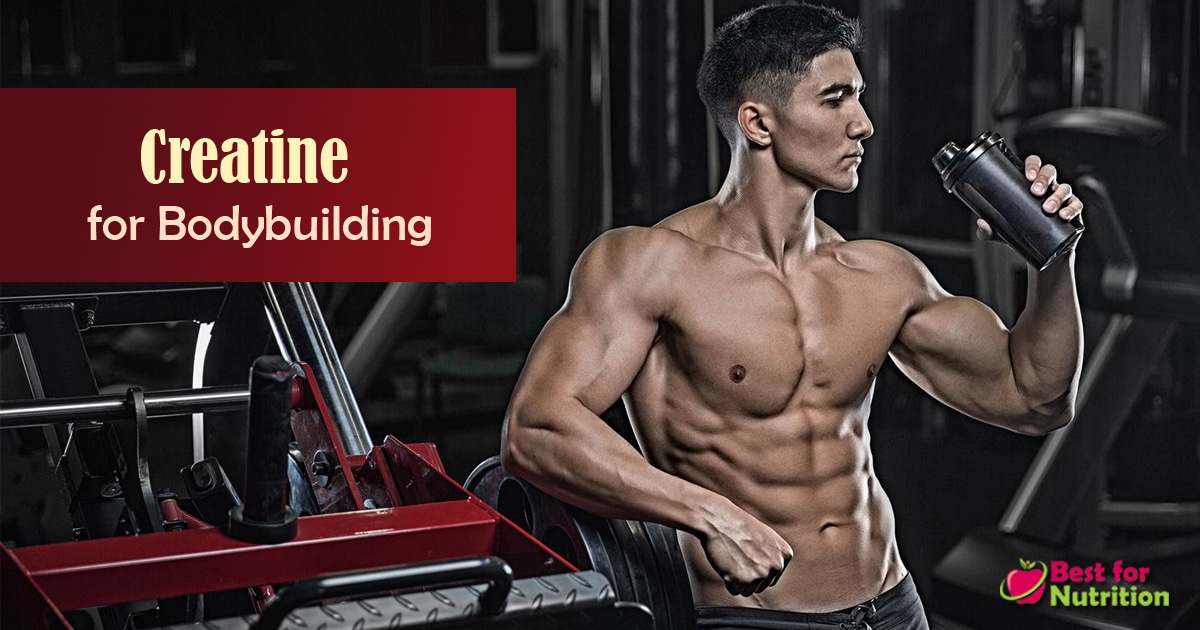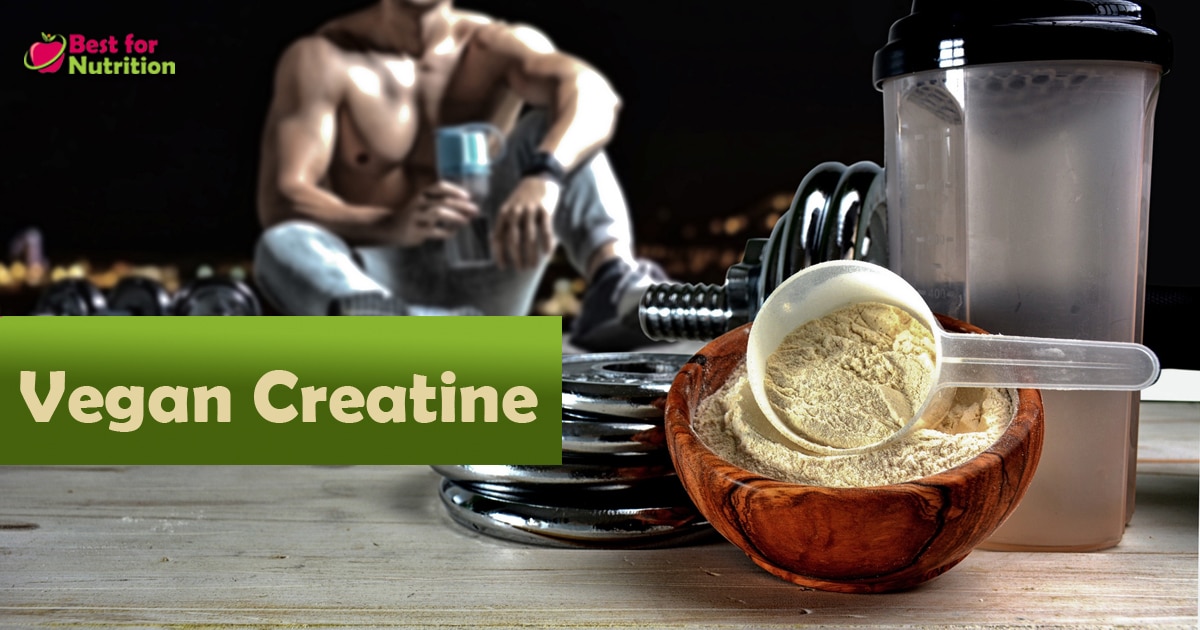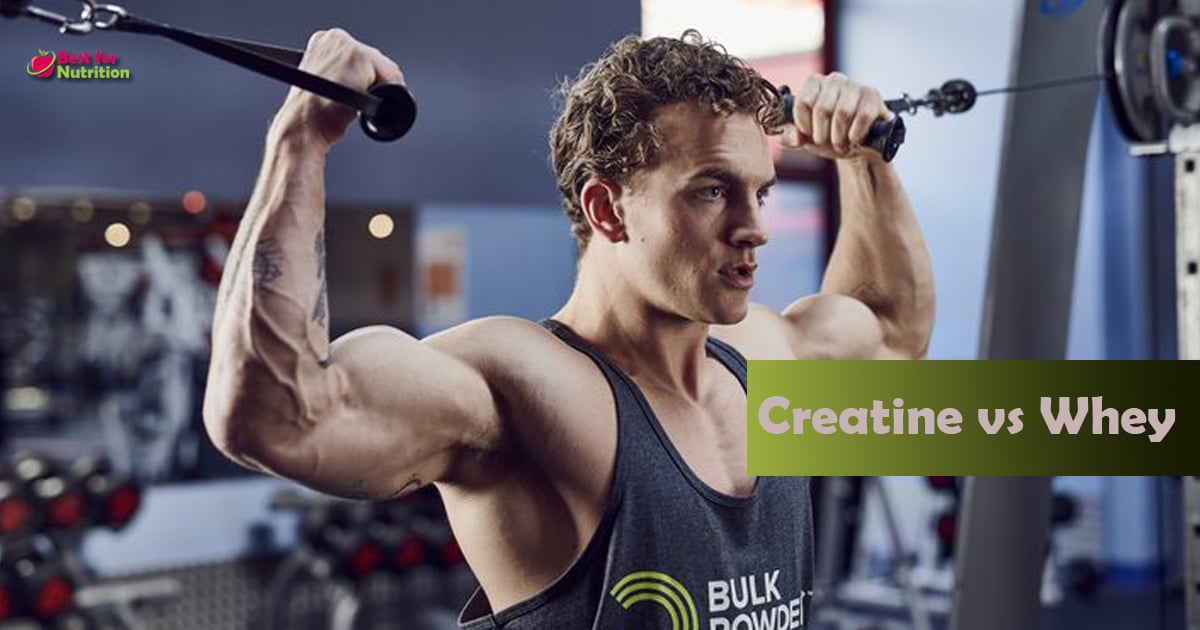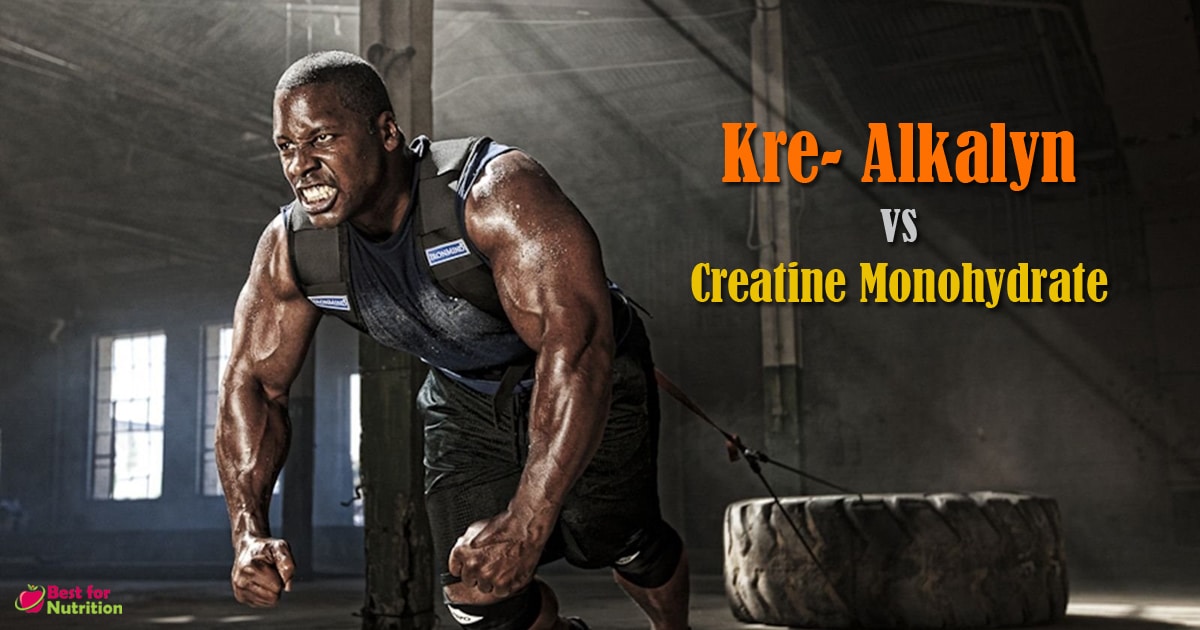People who work out, athletes, weight lifters, people who are into sports, need extra creatine to gain strength, size, and muscle.
Creatine is found in our muscle cells where it supports the muscles to produce energy. A person requires 1-3 grams of creatine in a day. Approximately half of this comes from diet and the rest is synthesized by the body (1), (2).
Consuming foods that contain creatine or taking creatine supplements provides you with that extra energy that can optimize your physical activity (3).
Since creatine is mostly found in animal protein, vegetarians and vegans can consume a combination of foods that provide them with the amino acids required to boost their natural production of creatine.
- Value for Money: With 50 servings per container, Bucked Up Creatine offers great value and is a cost-effective option for creatine supplementation.
- Taste-Free and Easy to Drink: The product has little to no taste, making it easy to mix into any drink without affecting flavor.
- High-Quality Creatine: The micronized creatine ensures better absorption, helping users see improvements in performance and muscle gain.
- Mixability: The powder mixes well with other supplements or drinks, providing a smooth texture without clumping.
- Muscle Gain and Workout Support: Many users report increased muscle mass and improved workout performance, making it an essential addition to fitness routines.
Here is a list of foods that are naturally high in creatine.
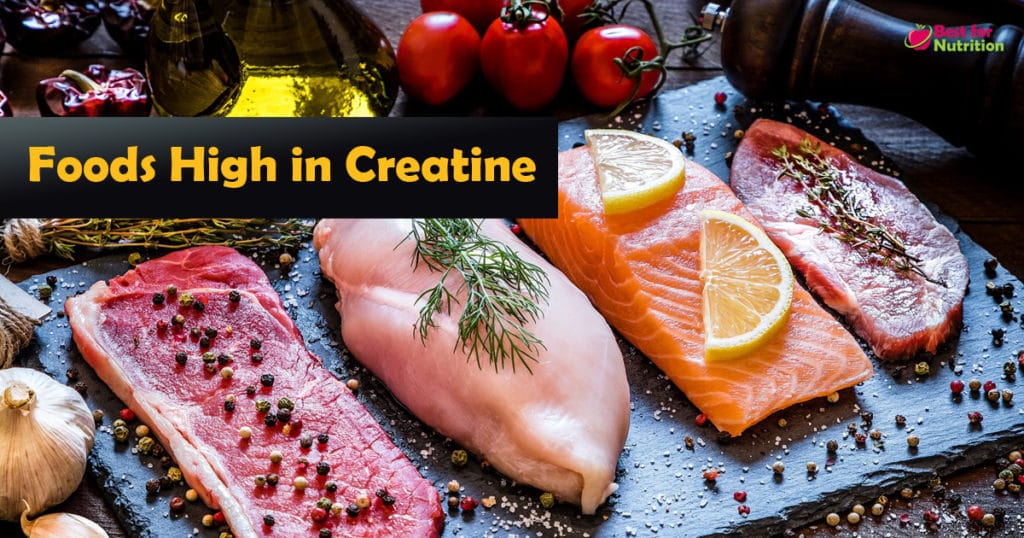
10 Non-Vegetarian Food Which is High in Creatine
Creatine is mostly found in animal proteins such as red meat, fish, and lean meat.
Here is the list of 10 natural creatine food sources from animals which when consumed adequately can provide you the required amount.
Red Meat
Red meat is a term used to define the meat of mammals. Beef, pork, and sheep come under this category. They contain a higher amount of iron than fish or chicken.
Beef is usually eaten as roasts, ribs or steaks. It is one of the most complete dietary sources of protein with an amino acid profile almost similar to your muscles. In addition to that, it is rich in vitamins such as vitamins A, E, B3, B12, and B6, minerals like iron, zinc, and selenium.
Beef has a high creatine content, particularly steak. Creatine in steak is 5 grams per kilogram of uncooked beef (4).
Summary: Red meat is one of the richest sources of creatine, containing an impressive amount of high-quality protein, vitamins, and minerals. It is a great food choice for boosting your energy and improving muscle health.
Chicken
Chicken is the most common type of poultry amongst all the domestic fowl which is eaten, in the world. It is a great source of lean meat (meat without much fat), which is high in protein and creatine (5).
100gm chicken has a protein of 23.2gm and creatinine of 3.4gm/kg. In general, the active chickens have more creatine than ones raised in cages and fed low-quality food (6).
Summary: Chicken has long been considered as a healthy alternative to red meat. The creatine in chicken with low levels of saturated fat makes it the best choice.
Pork
Pork is rich in proteins, and creatine. The creatine content in pork is around 0.7g/100g. This creatine combined with a good amount of vitamins and minerals, make pork an excellent choice in improving strength, increase lean muscle mass, and help in muscle recovery during and after exercise (7).
The high content of creatine in pork makes it great for bodybuilders, recovering athletes, people post-surgery, or others who need to build up or repair muscles (8).
Porks can be consumed as either cooked or preserved. Additionally cured pork products, such as ham and bacon, contain high amounts of salt.
Summary: Lean pork is every bit as good for your body as lean beef and chicken. Substituting lean pork for lean beef and chicken leads to less body fat, muscle building, and for a better heart.
Mutton
Mutton is tough and strong-flavored meat of domestic sheep. Lean mutton is every bit as good for your body as lean beef and chicken. Substituting lean beef and chicken with lean mutton leads to less body fat and a better heart.
This meat is a rich source of creatine and other high-quality proteins. In addition to that, it has an outstanding amount of vitamins and minerals like iron, zinc, vitamin B12 (9).
The creatine content is in the range of 5g/kg of uncooked meat.
Summary: Mutton is considered superior nutritionally because of its high creatine and protein content.
Venison (Deer Meat)
Venison (deer meat), has 50% less fat than beef, making it a healthier red meat alternative. It’s lower in fat, high in creatine, protein, a rich source of omega 3 and omega 6 fatty acids (10).
A 100g of Venison provides around 4-5g of creatine (11). This makes it a great choice for someone trying to build lean muscle. When people describe venison meat, they use words like rich and earthy.
This is festive-tasting meat, often imbued with hints of acorns, sage, and herbs that the deer enjoyed during its life.
Summary: Venison, which is more juicy and succulent meat than beef, is certainly a good source of creatine if you can afford it.
Salmon
Salmon is a common oily fish which is pink in color. The fish has a high content of creatine, protein, and omega 3 fatty acids. Its high-quality protein and heart-healthy fat make it a great food choice.
The creatine content in salmon is about 4.5g/kg. A 3.5 ounce serving of salmon at least twice a week will supply the body with adequate creatine to boost the energy level in your body.
It helps to maintain muscle mass when trying to lose weight. It can supply energy to the parts of the body where it is needed. Salmon also contains astaxanthin, an antioxidant that is good for muscles, heart, and skin (12).
Summary: Salmon is a low calorie, creatine rich food. Wild salmon is considered to be the best salmon to eat as it contains more vitamin A, D, and creatine.
Herring
Herring are forage fish which is delicious, flaky, and mild in taste. It is particularly beneficial for its omega 3 content, and creatine. Also rich in protein, Vit E, and selenium, Herring plays an important role in developing the immune system and thereby helps to minimize the damage caused by free radicals to body tissues (13).
Among the salt-water fishes, Herring contains the highest amount of creatine. 3-4.5g of creatine per pound (14). When compared to other fishes it is one of the cleanest ocean fish containing very low amounts of mercury. It can be used either in dried or pickled form.
Summary: If you are a person who doesn’t eat meat, then seafood like Herring which contains high creatine is the best choice.
Cod
Cod is fish with white flesh and mild flavor. Even though Cod is not promoted as healthy food, it is packed with lean protein, creatine, vitamin B complex, and minerals.
Cod is high in protein but low in calories and fat. A 100 gm of cod provides 95 calories, 20 gm of protein, 1.4-2.3 gm of creatine, and less than 1 gm of fat. Thus it promotes good health and weight loss.
Some cod products are used as cod supplements. The most popular of them is cod liver oil.
Summary: Cod is a low calorie, high creatine fish which is quite affordable. If the availability is low, then you can substitute it with cod liver oil capsules as supplements.
Tuna
Tuna is a saltwater fish. There are different sizes of tuna, ranging from the Bullet Tuna to the Atlantic Bluefin Tuna. It’s an expensive fish due to overfishing and they don’t breed in captivity. It’s a rich source of Vit B6, cobalamin, magnesium, and creatine.
Tuna has more red muscle than any other fish as they literally do not stop swimming. To burn the oxygen required by these hefty piscine muscles, tuna has myoglobin, a type of protein in their muscle. This makes it a tasty fish.
A 100 gms of Tuna provides 132 calories, 28 gms of protein (15).
Summary: Even though it’s a little smelly fish, it’s the best creatine rich food. Eating Tuna salads with Tuna sandwiches makes a great combination.
Humans
No, this is not about eating humans! It[‘s just that you need to be aware that the human body has its own source of creatine.
Creatine is a molecule that the body produces naturally in small amounts. It’s primarily made in the kidneys and completed in the liver by three amino acids: glycine, arginine, and methionine. It’s found in our muscle cells where it helps the muscle produce energy (16).
The normal creatinine level in an adult man is 0.6-1.2mg/dl and in an adult woman, it is 0.5-1.1gm/dl. When creatinine is not present in an adequate amount in our body, we feel as if we have no energy (17).
Summary: Creatine is a substance that is found naturally in muscle cells and is produced by humans from three amino acids, glycine, arginine, and methionine.
The Creatine-Producing-Amino-Acids
You must have understood by now that creatine is mainly found in animal meat, especially muscle meat. Very little creatine is found as such in any vegetarian form except for cranberries, which are commonly cited as a good source of creatine. Five hundred pounds of cranberries will provide you with just five grams of creatine (18).
However, creatine can be produced by our liver using the three amino acids as mentioned earlier (19). Consuming food that is rich in those amino acids can help our body synthesize creatine. Let’s take a look at them!
ARGININE
- Vegetarian sources such as dairy products (milk and cheese)
- Vegan options such as pumpkin seeds, sesame, walnuts, almonds, pine nuts, beans, peas, and seaweed.
GLYCINE
- Vegetarian sources such as milk and cheese
- Vegan sources such as sesame seeds, pumpkin, pistachio, spirulina, seaweed, watercress, and spinach.
METHIONINE
- Vegetarian sources such as eggs, milk, ricotta cheese
- Vegan sources such as tofu, brazil nuts, white beans, quinoa.
10 Vegetarian and Vegan Foods with Creatine-Producing Amino Acids
1. Milk is a rich source of protein, providing approximately 1g of protein per ounce. One cup of milk contains arginine (0.2 g), glycine, and methionine (431 mg), needed for the formation of creatinine in our body. This helps in growing and maintaining muscles (20).
2. Cheese is good for building muscle. They contain all the essential amino acids which are the building blocks of muscle tissue. The Parmesan cheese has the highest creatine content of 2.90g. Cheese is a great source of protein and calcium but is often high in saturated fat and salt (21).
3. Eggs are a great low-calorie food with only 77 calories and 5 grams of fat with very little carbohydrate. It is high in vitamin D, zinc, calcium, and all the B-vitamins. The abundant methionine in eggs makes it a good food source that helps produce creatine by the body (22).
4. Pumpkin seeds are nutritional powerhouses because they are an excellent source of creatine producing arginine and glycine. One cup of pumpkin seeds will give you around 7 grams of arginine. These seeds are nutrient-dense, with a good amount of methionine as well (23).
5. Sesame is a good source of protein and creatine forming glycine. 3 tbsp of sesame provides five grams of proteins. For better availability, hulled and roasted sesame seeds are the best (24).
6. Seaweeds contain a concentrated source of iodine and essential amino acids. Seaweeds such as Spirulina contain the most amount of creatine which is about 0.86g. It also helps to lower the body weight by not allowing the body to absorb fat (25).
7. White beans are a good source of protein, arginine, methionine, and fiber. When paired with a proper exercise regimen and a nutritious diet, they can promote healthy muscle mass by increasing creatine production. Among the white beans, kidney beans are the best (26).
8. Walnuts are a rich source of protein, arginine, omega 3 fatty acid, and alpha-linolenic acid. Thus it’s a delicious and healthy snack option for bodybuilders (27).
9. Almonds are packed with protein and creatine producing arginine, which helps in the development of lean muscle mass. They also contain healthy fats which help in maintaining and reducing the overall body mass index, making you lose weight (28).
10. Watercress is a powerhouse vegetable that packs several important nutrients like glycine which help in the production of creatine but is extremely low in calories. Thus it’s a key ingredient in the body builder’s nutritionally powerful diet (29).
Natural Vs Synthetic Creatine Sources
Creatine is a nitrogenous organic acid that helps supply energy to cells throughout the body, particularly the muscle cells. It occurs naturally in red meat, fish, and it is made by the body.
But in high-intensity exercise, creatine can improve performance by up to 15% and it can also help us to gain muscle and strength.
There arises the need to take creatine supplements, which are available in different forms such as pills, health drinks, and nutritional bars. Creatine supplements can cause numerous changes in the muscle cells, signaling your body to build new muscle proteins and increase muscle mass. One of the most popular synthetically produced supplements is Creatine monohydrate.
Doses up to 10gm daily until 5 years have been safely used in research (30).
Summary: Creatine is made naturally by the body and can be obtained via food, but there are certain situations in which your creatine requirement increases, and supplements can be helpful.
Frequently Asked Questions (FAQ)
How to Increase Creatine Naturally?
Creatine levels can be increased naturally by including more creatine rich food in your diet. A diet high in red meat, fish or dairy products can increase the level. It is recommended to aim for 1-2 g of creatine from natural food sources.
However, vegetarians with diet restrictions who are into high-intensity exercise should consume creatine supplements to meet their needs.
Do Eggs Have Creatine?
Eggs do not contain creatine but creatine forming amino acid methionine. It is estimated that 1 large egg contains approximately 196 mg of methionine which is around 27% of the RDI (Recommended Dietary Intake).
What Are The Vegetarian Sources of Creatine?
Creatine is mainly found in animal meat. Though there is no such vegetable source with high creatine in comparison, intake of foods rich in arginine, glycine, and methionine, which are the three amino acids that help produce creatine by the body, are available.
They are dairy products, pumpkin and sesame seeds, nuts such as walnuts, almonds, and pine nuts, legumes like beans and peas, seaweed, and watercress.
Final Note
Creatine is involved in making the energy, your muscles need to work. It functions as an easily accessible energy reserve for muscle cells, giving the muscles greater strength and endurance.
This has made creatine the most coveted nutritional supplement amongst fitness enthusiasts and athletes. However, it is always better to get your nourishment from food.
Research says creatine from food is absorbed most efficiently compared to supplements.
The key is to focus on a diet that is rich in creatine such as red meat, fish and poultry, or eating foods rich in amino acids that support our bodies in making creatine. This includes eating foods rich in arginine, methionine, and glycine such as nuts, watercress, dairy products, eggs, seaweeds, and beans.

